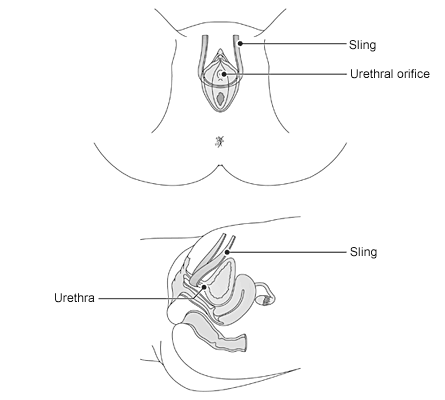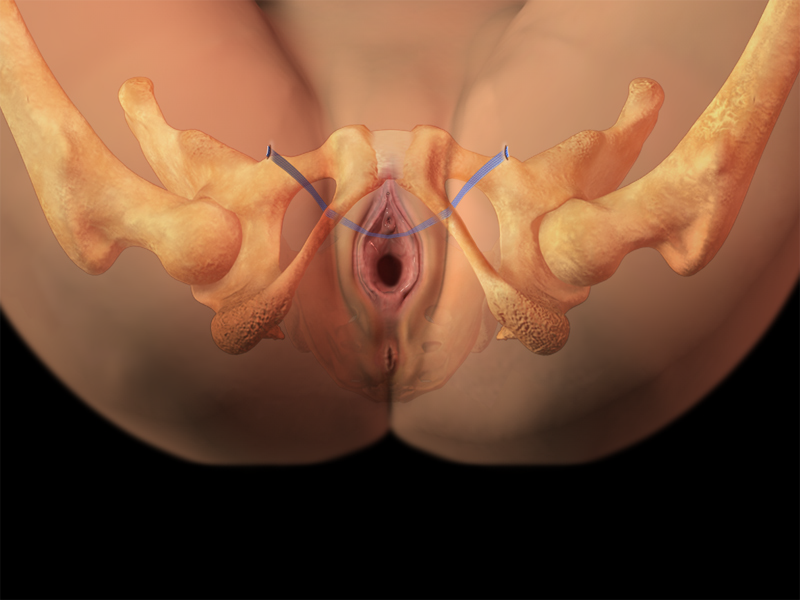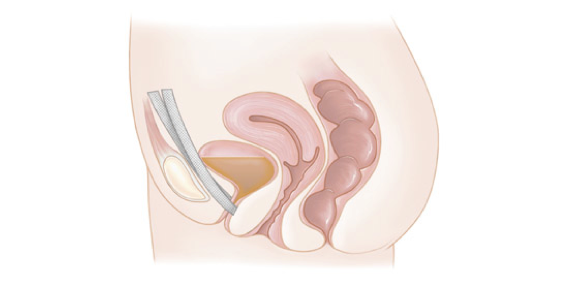– Specialties
Female Urinary Incontinence

Mid urethral slings for treatment of Female Urinary incontinence:
There are various surgical options for women with stress urinary incontinence who have not responded to physiotherapy or medications. Mid-urethral sling is a piece of surgical tape Made from type one synthetic mesh that supports the urethra. It is offered to women with stress incontinence that needs support to the middle section of the urethra to stay dry. This is usually because the muscles and the nerves in this area are no longer working properly. This operation is sometimes performed in combination with other procedures such as vaginal prolapse surgery.
Mid-urethral sling surgery is a relatively new operation. Developed since 1999 and 2004. We have now Data on their use over 7 years follow up. Their advantages are:
- A quick recovery time.
- It is quite simple.
- You usually only need to stay in hospital for few hours or a maximum of over night stay.
- There is very little pain afterwards compared to older incontinence procedures.
Procedure Details:
- Women will have the procedure under general anaesthetic. The procedure can still be done under local anaesthetics and sedation if necessary.
- You will have one small incision in your vagina and two smaller incisions on your lower Pubic area, or your groin.
- A special tape is looped under your urethra to provide lift and support.
- At the end of the operation the surgeon may look inside your bladder with a medical telescope to check for bladder injury.
- The operation takes less than 30 minutes to perform.

Pre operative investigations:
A bladder test called Urodynamics is done to check how well the bladder is working. This test will also help you and your surgeon make a decision with you about the suitability of this operation for you. It also helps the surgeon to know how much support the tape needs to provide to keep you dry.
Success rates:
esearch tells us that over 80%-90% of women with stress incontinence are cured or have significantly improved at a 7-11 years follow up. Longer-term effects are unknown at this point in time as this is a relatively new procedure.
Different follow up studies are for different procedures.

Risks associated with this procedure:
There can be complications with any type of surgery but serious complications are rare with this operation. The risks are:
- A small risk of damage to the bladder, urethra or blood vessels when the tape is inserted. In most circumstances these are discovered at the time of the procedure and are rectified.
- Between one and five women in a hundred will have trouble going to the toilet and may need a catheter after the surgery until normal bladder emptying is established.
- Very rarely adjustment or division of the tape is required.
- Between five and ten women in a hundred will develop an irritable bladder that can be treated then using medications or other modalities.
- One to five women in a hundred will develop an infection, however antibiotics are given routinely at the time of the procedure as a preventative measure.
- One in a hundred women will develop a wound infection.
- A very small risk of blood clots in the legs or tape becoming infected or exposed in the vagina, then it would need to be removed from the exposure area.
- After the ‘TVT-O’ sling, you may experience pain in your groin for a few days or weeks.
Recovery time:
Most women return home within few hours of the operation. You will be sent home once you are feeling well and once you are able to pass urine with no problem. If you need pain relief, tablets are usually enough.
It is important to rest after the operation and allow the area to heal.
Generally, it is recommended that:
- You restrict activity for two –three weeks
- After two-three weeks do light activity only
- Avoid heavy lifting for six weeks, including shopping bags, washing baskets and children.
- Abstain from sexual activity for six weeks.
- Avoid playing sport for four-six weeks.
Please note Any surgical or invasive procedure carries risks. Before proceeding, you should seek a second opinion from an appropriately qualified health practitioner.
Disclaimer
Dr. Al-Salihi does not accept any liability to any person for the information (or use of such information), which is provided in this fact sheet or incorporated into it by reference. We provide this information on the understanding that all persons accessing it take responsibility for assessing its relevance and accuracy.



